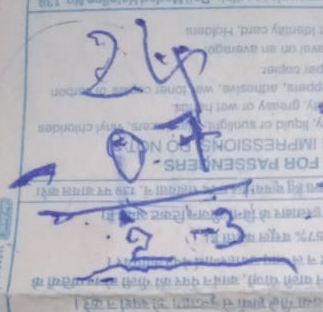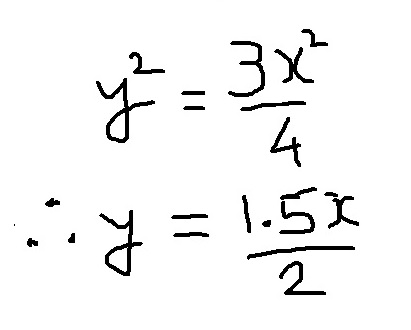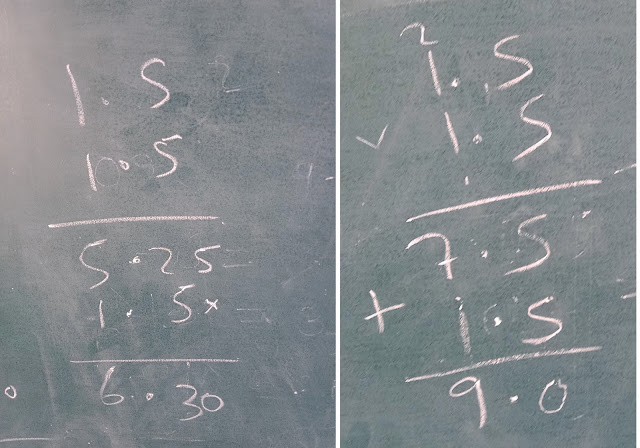I had observed that by now this 9-yr old was easily able to find out the results of subtraction problems where the first number is smaller than the second number. For eg: if we ask her what would be 7 minus 10, then she would say "Minus 3".
And how did such a young learner know about this Negative number thing? This interesting journey is shared in the Part-1 of this post... If you haven't read that yet, then it is recommended to read that Part-1 first before you read this Part-2... Here is the link:
https://rupeshgesota.blogspot.com/2025/01/math-journey-in-train-journey-part-1.html
So we continue our exploration further.
I draw her attention to the same previous problem 24-7 again.. I write these two numbers one below the other & write the digits of the answer after asking her:
24
- 7
---------
---------
'four minus seven?"
She tells "Minus 3" and I write it down
"Two minus ...........Oh, what's the digit here before 7?", while pointing my finger to the blank space before 7.
"Oh..okay"
i thought of asking her as to how does she know. But then chose to park this important question for later and go with the flow... So then I write zero before 7 and then ask her about the digit in the answer's place below 2 and 0.
She says, "Two" and I write it over there. (check image)
I now tell her, "So this answer is 17, right?"
And she looks at me with surprise.. and then comes her "No."
She looks at it. And then again looks at the strange looking new answer. But with no other response.
"So you say this newly worked out answer is not 17?"
"Yes..Its not 17"
"Then what's that number?"
"Umm... Its Minus 1"
'Oh.. and how is that -1?"
"Because 2 -3 equals -1"
"Oh..I get what you did..."
(Frankly, I was expecting this type of response from her... Did you also see it as -1, the way she did ? And did you also wonder about this strange looking answer?) :-)
I continue probing her..
'But then can there be two different answers for the same subtraction problem?"
"No"
"Then how come by previous method the answer is 17 and by this method, the answer is -1 ?"
No response..
"You want to know this?"
She nodded her head (implying yes).
So I draw her attention to the number 23 that was written somewhere on the ticket and ask her to read that number. She said Twenty three.
Now I write 312 on the ticket, and ask her to read it. She said Three hundred and twelve.
I ask her that both the numbers have digits 3 in it. What made her read them differently? (as in why just 3 in 1st case & as three hundred in 2nd case)
"In the first case, 3 is in one's place, and in Hundred's place in the second case"
I ask her that both the numbers have digits 2 in it. What made her read them differently? (as in why twenty in 1st case and just 2 in 2nd case)
"In the first case, 2 is in ten's place, and in One's place in the second case"
"Yes, so the place in which the digit is written decides its value. Right?"
'Yes"
Now I ask her - So what is this number Three hundred and twelve (312) made up of?
No response
"Whats the value of 3?"
"Three hundred"
"of 1?"
"Ten"
"of 2?"
"Two"
"correct.. So twenty plus three equals twenty three."
I write 85 and ask her its value.
She says," 80 plus 5 equals eighty five"
I write 79 and ask her its name.

"So now with whatever we have learned / understood, can you find out what's the value / name of this number."
"twenty minus 3"
"Seventeen" but with a puzzled look and tone!
I saw that she was still not so satisfied with this seventeen. So I thought to show her the previous work which showed the familiar 17.
And then asked her if she remembered this?
"yes"
"Whats the answer of 24 minus 7 using old way?"
"seventeen"
Whats the answer of 24 minus 7 using new way?"
"seventeen" with some surprise & smile on her face...
"So both the answers are same?"
"yes"
"But then why were you unable to identify this strange looking number as 17 earlier?"
"because its not one seven seventeen, its two minus 3 seventeen"
"Hmm... its not one seven seventeen... Its ten plus seven seventeen"
"yes.."
"And here?"
"here its twenty minus three seventeen.... I have not seen such 17 in school / text book.. So I got confused."
"I get that... but you have understood this now?"
Smile on her face..
"Shall I give you one more problem?"
Quick and Joyful "yes"
So I tell her to solve 42-17. But first using the old/ school / textbook way, and then using the new way she has learned. And this is what she did.
As you can see from right side image above, she has also calculated the value of strange looking number as 25.
It was a delight to see Joy on her face & Confidence in her body language when she was able to verify that both the methods gave the same answer. (an experience that's rarely given to children in classrooms).
"One more?"
And there was 'yes" again!
"But this time I will be giving you a little difficult one...Okay?"
"Okay" she said while giving a smile to her mother sitting next to her ;)
I gave her 421 - 115, but with some change this time - first using the new way and then using the old way..... And this is what she did.



























